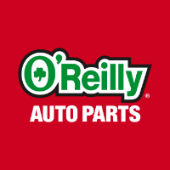-
Welcome to Auto Parts Forum
Whether you are a veteran automotive parts guru or just someone looking for some quick auto parts advice, register today and start a new topic in our forum. Registration is free and you can even sign up with social network platforms such as Facebook, X, and LinkedIn.
Door Lock Replacement (Late model Ford Trucks)
-
Similar Content
-
- 0 replies
- 21 views
-
- 0 replies
- 42 views
-
- 0 replies
- 26 views
-
- 0 replies
- 30 views
-
- 0 replies
- 27 views
-
-
Similar Topics
-
By Dorman Products
Cost-effective replacement intake manifold for Ford Coyote 5.0s | Dorman OE FIX 615-916
-
By Kozmo Jr.
I tough truck at my local county fair, and I recently bought a 1998 F-150 to run for the event this year. The truck has been sitting for some time and needs new calipers, however I like to build these without having to throw a bunch of money in. I was wondering if there was any way for me to take the calipers off my 2002 Chevy Astro van that I ran last year and put them onto my '98 f-150. I'm assuming I would have to make a custom mounting plate of some sort? I would like an external opinion before I dive into this if you have any input.
-
By Counterman
On modern vehicles, overheating is a rare occurrence thanks to high-quality hoses, thermostats and better engine management. Unfortunately, the weak point is still the coolant. Whether it’s a 100,000-mile or 150,000-mile coolant, eventually it will break down and lose the ability to protect the components with which it comes into contact.
Coolant at 100,000 miles may look the same as coolant with zero miles, as the real difference between good and bad coolant can’t be seen with the naked eye; it is in the chemistry and based on mileage.
Coolant contains additives called buffers that keep it at a neutral pH but these buffers are meant to last forever. When these chemicals become depleted, the pH can’t be controlled. It rises dramatically in a short period of time the moment the buffers are fully depleted. This is why replacing the coolant at the recommended interval is critical.
Coolant has two specifications that can be used to justify replacement — the condition of the additive package and the freezing point.
The additive package is the secret sauce for a coolant. Its main function is to control corrosion. Other components of the additive help with heat transfer and cavitation reduction. Some additive packages use seal conditioners to extend the life of the gaskets and plastic carriers.
The freezing point is measured by the overall specific gravity of the coolant, which has a direct relationship to the coolant/water mixture. This test can help spot coolant that has been compromised by the owner topping off with water. This measurement works well on systems that do not have pressurized reservoirs.
The strength or freezing point of coolant can be measured with a simple hydrometer. This device uses a calibrated float or plastic balls (not as accurate) to show the specific gravity of the coolant. This, in turn, shows how much freezing/boiling protection the coolant offers. You must remember to compensate for temperature because the specific gravity (density) of the coolant is lower when the coolant is hot.
The more professional tool for this purpose is an optical refractometer because it is very accurate and automatically compensates for temperature. Be aware: these are not simple, inexpensive tools. A refractometer can cost up to $300 or more because of the precision optics in its lens. Ethylene glycol (EG) and polyethylene glycol (PG) antifreeze have slightly different densities, so you have to use a hydrometer or refractometer with the appropriate scale (or one with a dual scale) for accurate test results.
Color-coded chemical test strips that are dipped into the coolant can be used to quickly and easily reveal the condition of the coolant. These strips of coated capillary paper react to the presence of certain dissolved minerals in the coolant and change color to give a good, marginal or bad indication of the coolant’s pH condition. Some test strips also show the concentration of antifreeze in the coolant.
The added benefit of test strips is that the results can be shared with the owner by attaching the used strip to the inspection form.
But, mileage is the gold standard for any coolant replacement recommendation. Engineers and chemists spend a lot of time formulating the coolant to match the engine and interval.
If you are performing a water pump, heater core or hose repair, recommend a full coolant flush. Just topping off the coolant can lead to a mixed bag when measuring the pH and freezing point. Also, check the specific gravity before a repair. Many customers know how to top off their coolant with water that could dilute the coolant concentration.
Selling any fluid maintenance service is difficult these days. But, if you document and educate customers on the importance of coolant, it becomes more than just an “add on” service.
The post
link hidden, please login to view appeared first on link hidden, please login to view.
link hidden, please login to view 
-
By NAPA
Chase Elliott and No. 9 link hidden, please login to view team qualified ninth for Sunday’s NASCAR Cup Series race at Circuit of The Americas (COTA) As part of the team’s strategy, the 2020 Cup champions pitted in the closing laps of each of the first two stages to hopefully put themselves in a good position to battle for the win In the final stage, Elliott had just made a pass for fifth place when his No. 9 NAPA Auto Parts Chevrolet Camaro got loose and he was penalized for exceeding the track limits Despite serving a pass-through penalty, the 28-year-old rebounded to 11th on lap 54 Turning some of the fastest laps of the field, he was close to breaking into the top 10 when he spun and dropped to 19th Elliott rallied to finish 16th and is now ninth in the Cup Series points standings Chase Elliott earned a ninth-place starting position for Sunday’s NASCAR Cup Series race at Circuit of The Americas (COTA), marking the third straight week the No. 9 team qualified inside the top 10. At the start of the 68-lap race, Elliott held his own among the top-10 running order. He lost some positions as the run went on and was 13th when he relayed to the team that his No. 9 NAPA Auto Parts Chevrolet Camaro ZL1 felt stiff on initial load. Elliott advanced to 12th prior to being called to pit road in the closing laps of stage one for four tires and fuel – one of the popular pit strategies among the field. With some teams staying out on the track, Elliott was 18th following the pit stop and that’s where he remained to end the first stage.
During the stage break, several teams that didn’t short pit the first segment made their way to pit road, putting Elliott in the ninth position to start stage two. Prior to taking the green flag, the 28-year-old driver reported that the NAPA Chevy was tighter through the center of the turns after the initial pit stop. Despite the tight handling condition, Elliott continued to turn laps inside the top 10 during the second stage. He ran as high as seventh and was scored in the eighth spot when crew chief Alan Gustafson radioed for Elliott to come to pit road for four fresh tires and fuel. The team also took the opportunity to reverse an air-pressure adjustment that was made the first pit stop. Elliott returned to the track in 21st and stayed there to take the green-and-white checkered flag on lap 30.
The 2020 Cup Series champion started the final stage from the 11th position on lap 33 and impressively maneuvered his way to sixth by lap 36. Elliott had just made the pass for fifth when he got loose in turn four and was issued a pass-through penalty for short cutting the course. The team challenged the call, but Elliott was ultimately forced to serve the penalty on lap 40. After leaving pit road, Elliott was scored 22nd but quickly made up ground on his competitors. Green flag pit stops got under way on lap 44 with the No. 9 team making its on lap 47. Following the four-tire pit stop, Elliott was 26th in the running order but was consistently turning some of the fastest laps of the field. The Dawsonville, Georgia, native was up to 20th on lap 50 and advanced to 15th just one lap later as green-flag stops continued. Elliott was up to 11th and had his sights set on a top-10 finish when he got loose and spun. The driver of the No. 9 was able to continue but the setback dropped him to 19th. Refusing to give up, Elliott fought hard to regain track position. He picked up a few spots and the team was hopeful for a late-race caution, but it never came. When the checkered flag waved, Elliott and the No. 9 NAPA Auto Parts crew was scored with a 16th-place finish.
Elliott leaves COTA ninth in the Cup Series points standings, just 47 markers behind the leader.
Next Race: Sunday, March 31, Richmond Raceway
How to Watch or Listen: 7:00 p.m. ET on FOX, MRN or SiriusXM
Start / Finish: 9 / 16
Points Standing / Total: 9th / 173 pts. (-47)
NAPA:
link hidden, please login to view
Chase Elliott: link hidden, please login to view
Hendrick Motorsports: link hidden, please login to view
No. 9 Team: link hidden, please login to view The post
link hidden, please login to view appeared first on link hidden, please login to view.
link hidden, please login to view
-





Recommended Posts
Join the conversation
You can post now and register later. If you have an account, sign in now to post with your account.
Note: Your post will require moderator approval before it will be visible.